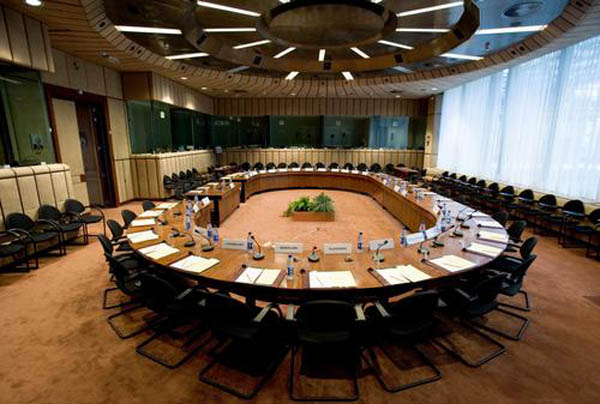
Technicalities can conceal an abundance of politics. One of the last provisions of the Lisbon Treaty (which had been signed in 2007 and has been applied since late 2009) came into effect on 1 November, coinciding with the changing of the guard in Brussels. The text itself had postponed until that date the implementation of the voting system in the Council by a double majority of states and populations. The system partly reflects that the EU is a union of states but also of citizens.
It is a system that has been hotly debated, especially from Spain. Previously there was weighted voting. In fact, in the final phase of the negotiations on the Treaty of Lisbon, Prime Minister Aznar, convinced that Spain’s representation would be reduced, blocked the change and therefore the treaty itself. The entry into office of his successor José Luis Rodríguez Zapatero’s unblocked the process, leading to a system that is more democratic and ultimately more pragmatic (especially in view of further enlargements), although it is complicated, rather than complex.
Its main provision is article 238 of the Treaty on the Functioning of the European Union, derived from the Lisbon Treaty, which states inter alia that decisions by a qualified majority on the basis of a proposal from the Commission or from the High Representative for Foreign Policy must be taken by 55% of the member states –ie, 16–, representing 65% of the Union’s population (for other decisions, either 72% of the population or 21 member states).
What is important is not so much the qualified majority as the ability to block a decision. And for that, four member states are necessary, since this prevents Germany from blocking decisions with just two other large states. If all states but three vote in favour, the qualified majority is obtained even if they do not represent 65% of the population, which places Berlin in a minority. In the case of the Eurozone, or other groups in which not all members participate, the blocking minority must include at least the minimum number of members representing 35% of the population, plus another state. That is, in the case of the Eurozone, at least three member states are needed, since, for instance, Germany and France already account for more than 35% of the population. It seems complicated, but it is not that difficult: the Council has developed an electronic calculator in order to make the task easier for the member states’ representatives. In principle, the new system makes it easier to reach qualified majorities and more difficult to build blocking minorities. Although, it must be said, in the EU Council 80% of decisions are made with no member states voting against.
The system was already studied on the way to Maastricht but it only became an issue at the Convention that led to the failed European Constitution and later in the play-offs which resulted in the Treaty of Lisbon. Naturally, typically in the EU, rules can be nuanced. The new system’s implementation was already delayed until now. And until March 2017 the old system can still be applied in the event of a state asking for it to be applied for a decision. There is also a ‘Ioannina-bis’ provision whereby if a contrary minority is close to counting as a blocking minority, the negotiations must be extended to do everything possible to reach a satisfactory solution.
Every 1 January the Council sets the appropriate population figures based on information from the Statistical Office of the European Union. Spain is attributed 46.7 million inhabitants, or 9.24% of the EU’s total population. It previously had 27 votes out of a total of 352, or 7.67%. Indeed, Spain’s potential loss of representative strength does not derive from mathematical criteria –it now has a greater weight than before– but mainly from the increase in the number of new members and their combinations, that make it necessary to seek more alliances. This forces Spain –which has not cultivated the skill sufficiently– to knit more strategic or tactical relationships in a more complex Union, in which it is harder to achieve a blocking minority. In the euro zone it is even more difficult for Spain, although with the Banking Union it has shown that when teamed up with France and Italy, Germany can actually be made to submit.
It is true that the Council does not formally vote that much, although the trend is on the increase. And the distribution of votes (and vetoes, forbidden in theory) hovers over every decision. Moreover, the entry into force of the new system breaks the parity that Germany and France previously had, matched at 29 votes each. Germany has a population of 80.5 million and France, the Union’s second most populous country, 65.6 million. The weight of Germany’s population is far greater (as reflected already in the allocation of seats in Parliament).
One consequence is that the new system can facilitate secessions within the EU. While the UK had 29 votes, if Scotland had seceded the remainder of the country would hardly have been allowed the same 29 (with a population of 58.4 million, like Italy) plus seven votes for Scotland (with a population of 5.3 million, similar to Finland). Scotland and the remaining part of the UK would then have had 36 votes. Rather, they would have had to share out the 29 votes on Scotland’s re-entry to the EU. The deal would have been the result of a negotiation between London and Edinburgh. With the new system it is easier, because Scotland’s vote would count as a state and considering its population, as would be the case with the remainder of the UK, with no negotiations being necessary. Although, of course, this is the least of the problems in the event of a secession.
If the EU was complicated before, now it is a little bit more.


